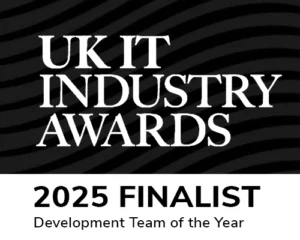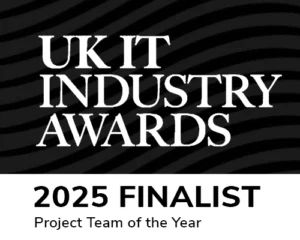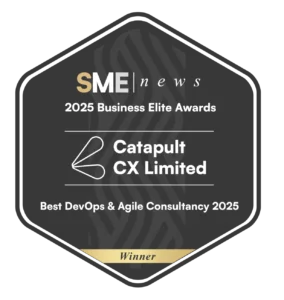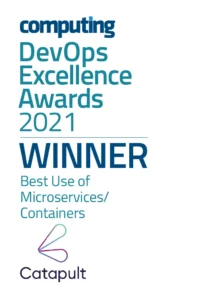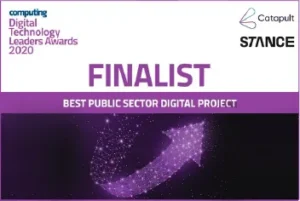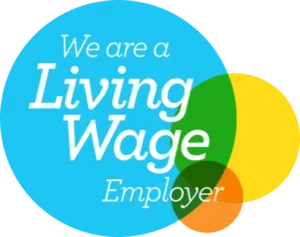How much of your budget is allocated to projects based on slide decks and vendor promises? For most organisations, it’s a dangerously high number.
Digital transformation remains a top priority, yet the outcomes are far from certain. Bain reports that 88% of business transformations fail to achieve their original ambitions whilst TEKsystems found that 41% of organisations admit their digital transformation initiatives fail to deliver the desired outcomes.
These aren’t just statistical failures, they’re stories of wasted investment, stakeholder frustration and in some cases, career-limiting damage for the leaders accountable.
The root cause is a systemic addiction to ‘big-bang’ builds. Teams commit to multi-million-pound programmes without first validating the most critical assumptions:
- Will it work for our users?
- Can it integrate with our legacy systems?
- Will it actually deliver the promised value?
This is a gamble you can no longer afford to take.
Rapid prototyping offers a smarter, commercially responsible alternative. It’s a method for gathering evidence, de-risking decisions and securing buy-in before the major cheques are signed.
Why digital transformation projects fail
Transformation failures rarely stem from a lack of ambition. They happen when teams are forced to build on a foundation of unproven assumptions. This leads directly to the three objections that kill promising projects.
3 reasons stakeholders say no
- Cost vs uncertain value. The business case is based on projections, not proof.
- Too complex to deliver. The risk of legacy system integration is unknown and feared.
- Not credible without evidence. Leaders are tired of promises and need to see something tangible.
Without a working model, your transformation strategy feels like a high-stakes bet. Rapid prototyping changes the game by providing the one thing that overcomes all three objections – proof.
The simple math of de-risking
The financial logic of rapid prototyping is straightforward.
This example uses conservative, industry-based figures to contrast the financial exposure of a typical £2M ‘big-bang’ transformation project against a prototype-led approach – remembering, of course, that a PoC isn’t just a throwaway. Rather, it will lead into a Minimum Viable Replacement (MVR) or a MVP.
| Metric | Scenario A: Big-Bang Build | Scenario B: Rapid Prototyping First |
|---|---|---|
| Initial Investment | £2,000,000 (Full project budget) | £75,000 (Prototype phase) |
| Time to Insight | 12–18 months (Post-launch) | 4–6 weeks |
| Point of Failure Discovery | Month 10 | Week 5 |
| Sunk Cost at Failure | £1,200,000 | £75,000 |
| Financial Outcome | -£1.2M wasted spend | £1.925M preserved budget |
The key takeaway is that a ‘failed’ prototype is not a wasted expense; it’s a highly efficient process that actively preserves capital by preventing a far larger, more damaging mistake
Beyond the numbers
Prototyping shortens time-to-insight, builds trust with stakeholders and validates user alignment. Think weeks instead of years.
What is rapid prototyping
Rapid prototyping is the practice of creating a working, testable version of a service or system, to explore feasibility and validate assumptions before committing to a full build.
Unlike a glossy click-through, a prototype can test reality:
- Technical feasibility. Will it integrate with our core legacy systems? Can we solve the identity and security challenges?
- Service design. Can real users complete key tasks efficiently and effectively?
- Operational fit. Does the proposed solution actually reduce workload, cost, or complexity for internal teams?
The goal is not to build the final product. Rather, the goal is to generate evidence to make a confident decision – proceed, pivot, or stop.
Four undeniable benefits of prototyping
- Budget credibility. Prototypes transform your business case from a document of assumptions into a presentation of evidence. When you can demonstrate a working model that has passed technical and user validation, you aren’t asking for a leap of faith, you’re presenting a de-risked investment.
- Stakeholder confidence. Nothing builds confidence like a functional demonstration. Prototypes give leaders, policy owners and investors a concrete way to engage, challenge and support your vision.
- Early termination of bad ideas. The most valuable outcome of a prototype can be proving that an idea won’t work. By surfacing fatal flaws in weeks, not months, you prevent weak projects from draining budgets and consuming resources that could be allocated to winning initiatives.
- Accelerated delivery. By solving the riskiest technical and user-centric problems upfront, you clear the path for the full delivery team. Integration challenges, security protocols and core user journeys have already been validated, dramatically reducing unforeseen blockers during the build phase.
Cross-sector proof
The power of prototyping is proven across industries where the stakes are high.
- Maritime & Coastguard Agency (MCA)
The MCA needed to modernise beacon registration – a critical service with backlogs stretching to 18 months. By prototyping digital workflows and validating user journeys, they proved feasibility before scaling.
Outcome: Backlog reduced by 18 months, saving £300k annually. - Leading AI Platform
A fast-growing identity verification platform needed to re-architect its AI infrastructure to handle massive scale. By prototyping new data pipelines and model integrations, they validated a new approach before committing to a rebuild.
Outcome: Infrastructure costs reduced by 96%+, verification accuracy increased to 97% and throughput grew 3100%.
Different industries, same result. Rapid prototyping turns uncertainty into evidence.
Catapult’s approach. Shape → Build → Test
We’ve refined a three-stage approach, designed to deliver what leaders need most – clarity, evidence and confidence.
- Shape. We work with your teams to frame the problem, surface the riskiest assumptions and define clear hypotheses to test. We focus on what matters. We don’t prototype everything.
- Build. We create focused, working prototypes using production-grade code. This ensures the evidence we generate is grounded in reality, not mock-ups.
- Test. Prototypes are validated with real users, stakeholders and technical teams. We capture data on usability, operational impact and technical feasibility to give you the evidence for a confident go/no-go decision.
Our differentiator. We don’t just blindly build what you ask for. We challenge assumptions, stress-test ideas and deliver prototypes that prove value in the real world.
Prove it before you build it
Digital transformation carries high stakes. In a world of tightening budgets and low tolerance for failure, basing multi-million-pound decisions on promises is no longer a viable strategy.
Big-bang builds gamble with your budget, your timeline and your reputation. Rapid prototyping is the antidote. It replaces assumptions with evidence, giving you the confidence to shelve weak ideas and scale the winners.
The smartest way to drive digital change is to prove it first.
Book a call to explore how Catapult’s rapid prototyping services can de-risk your next transformation.












